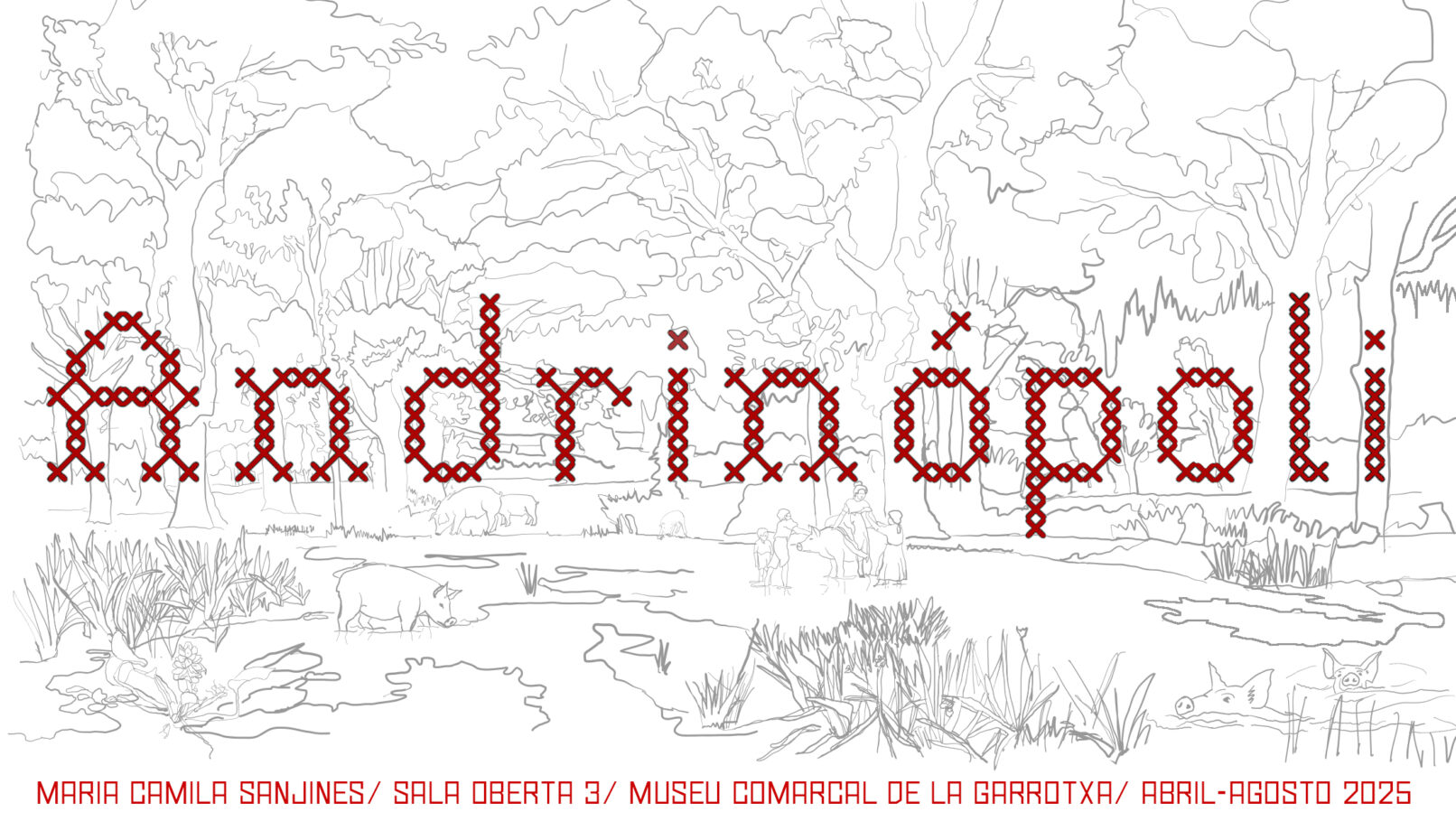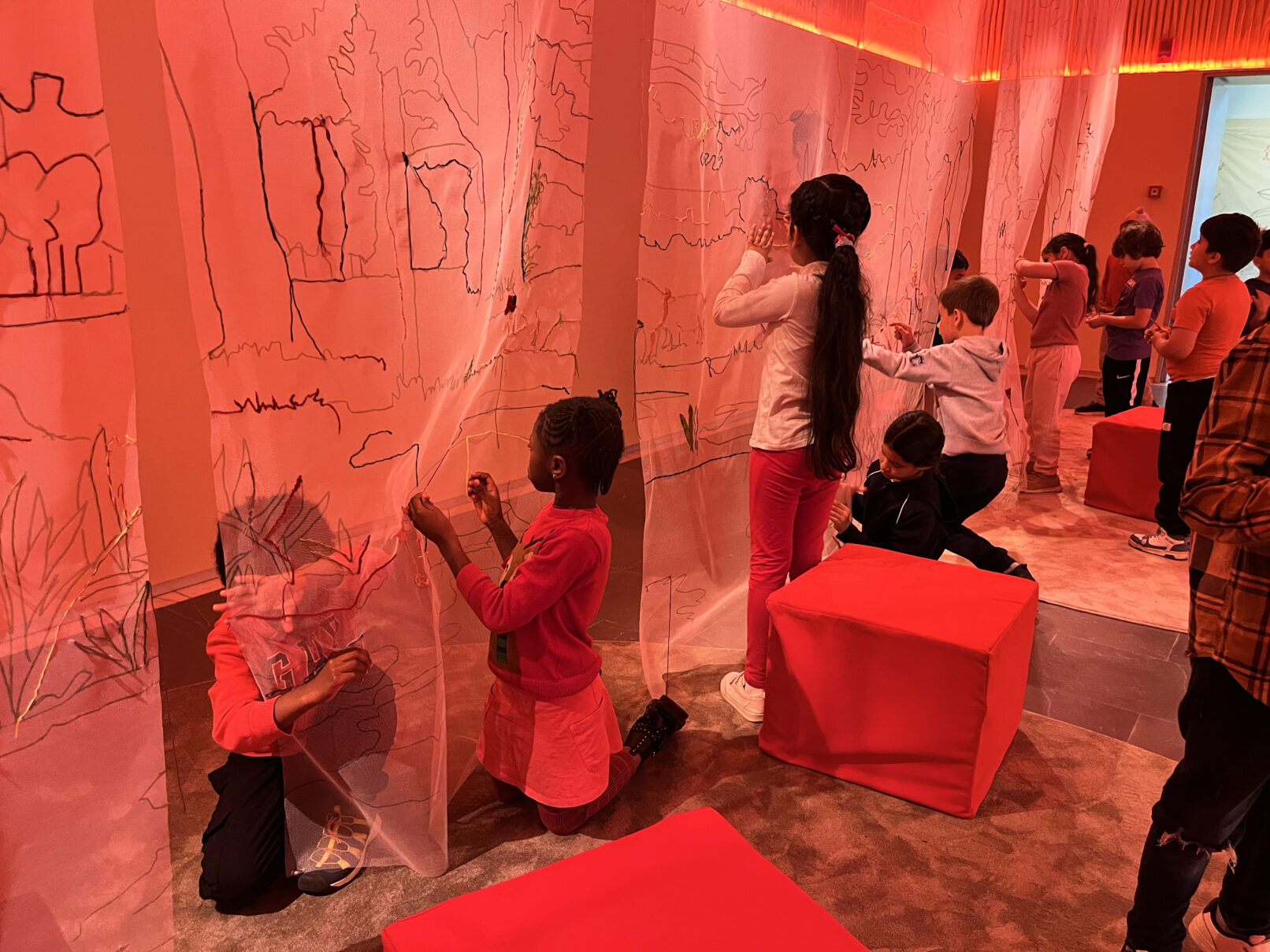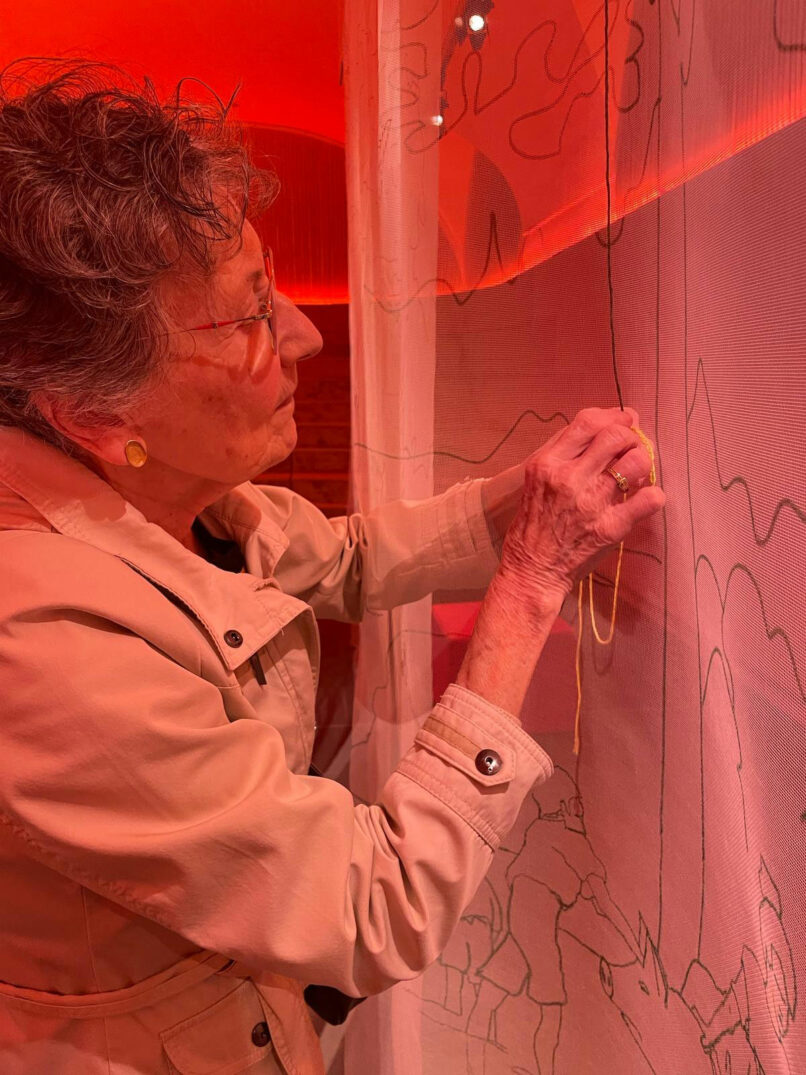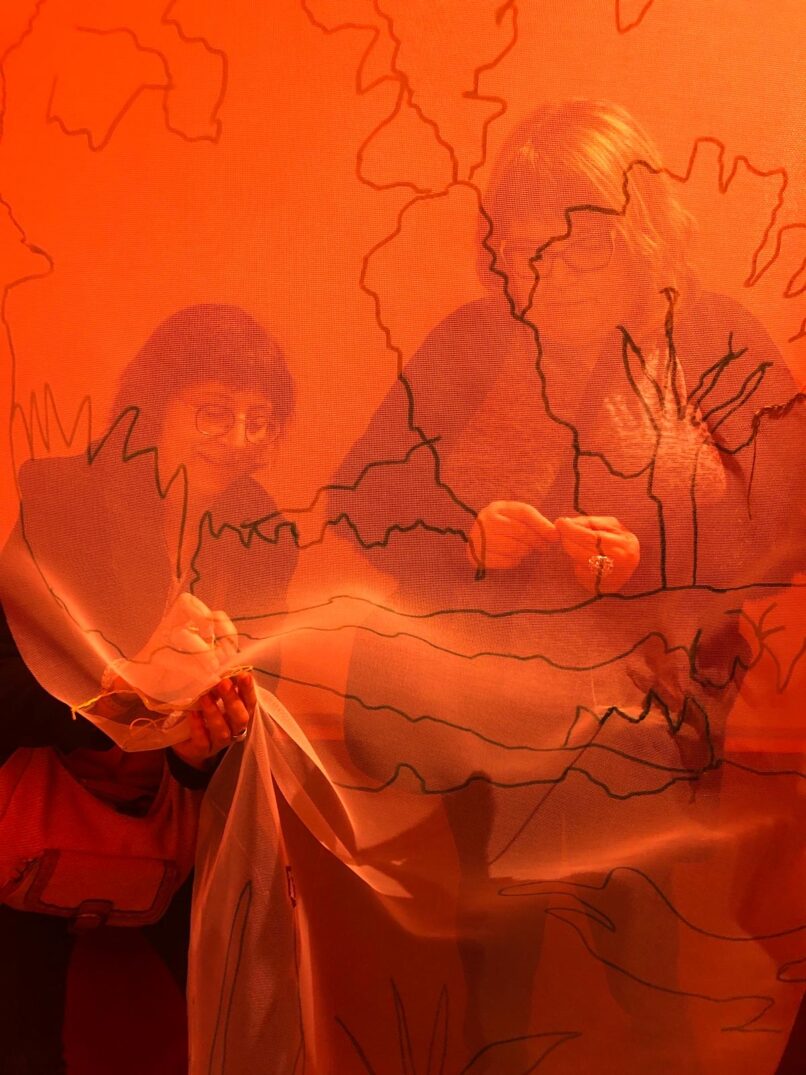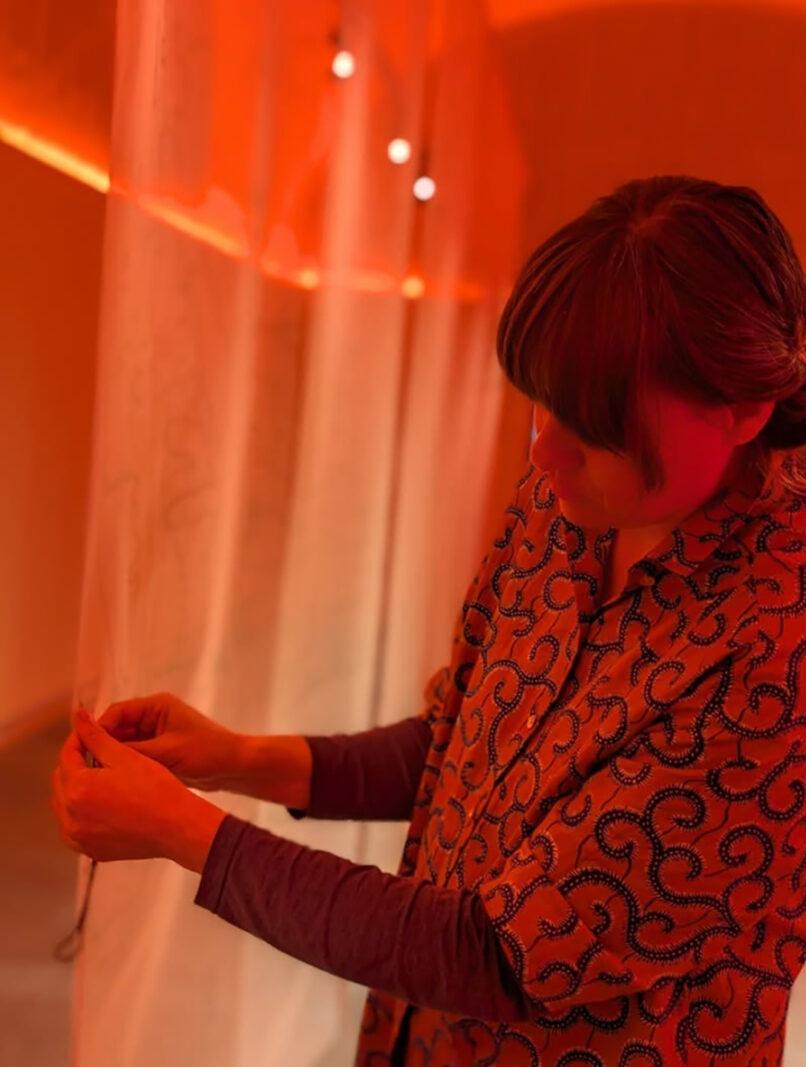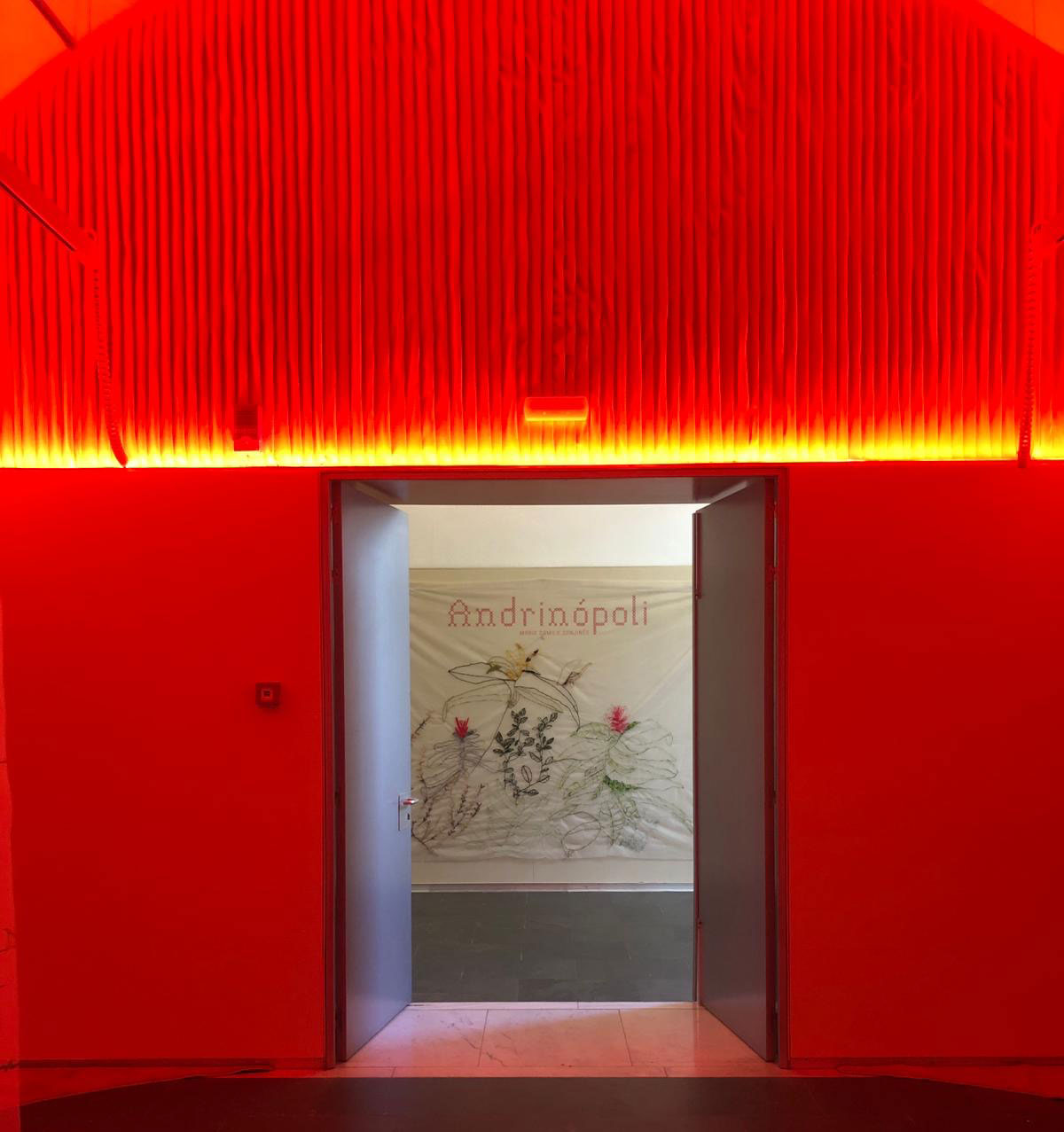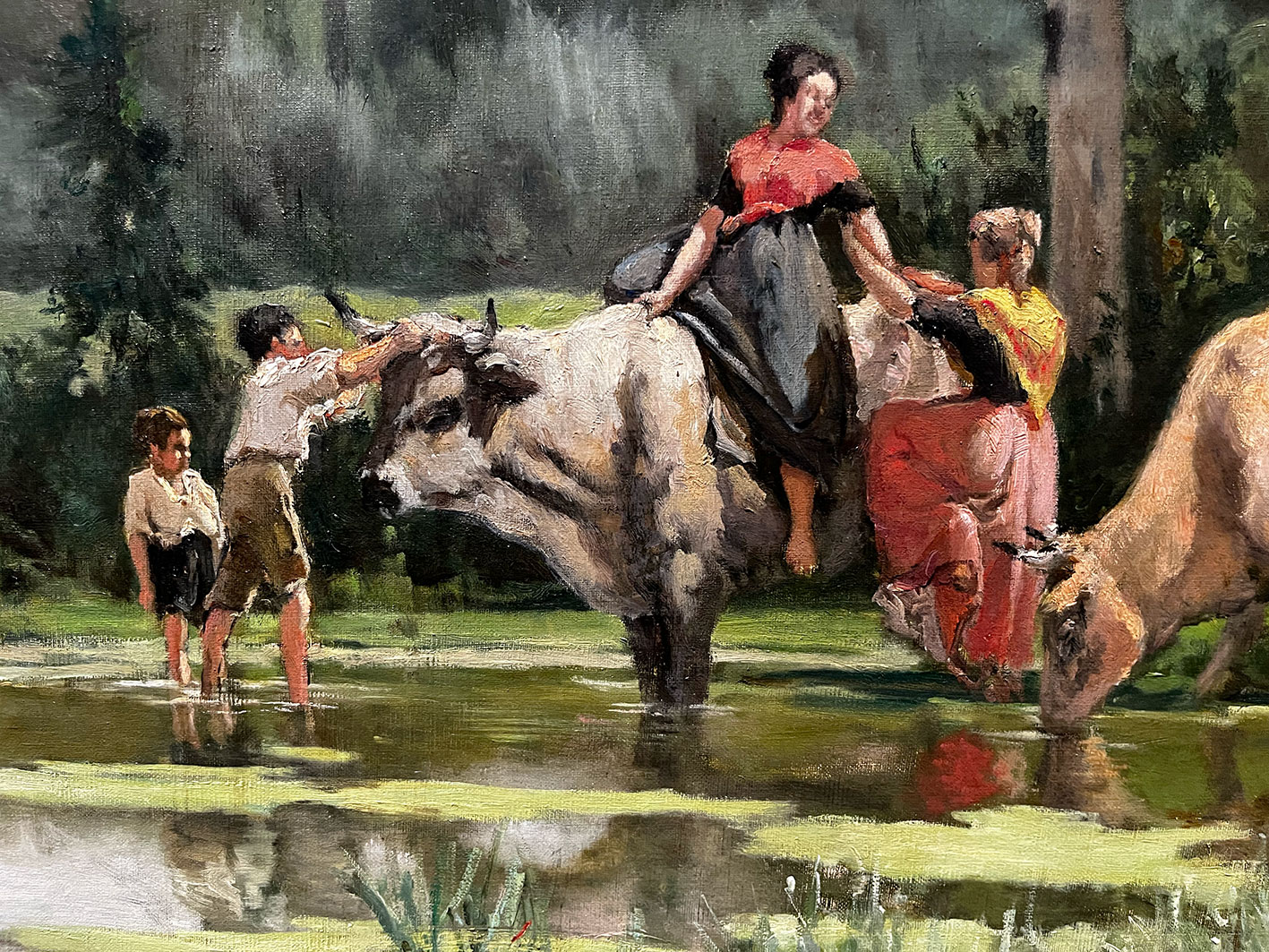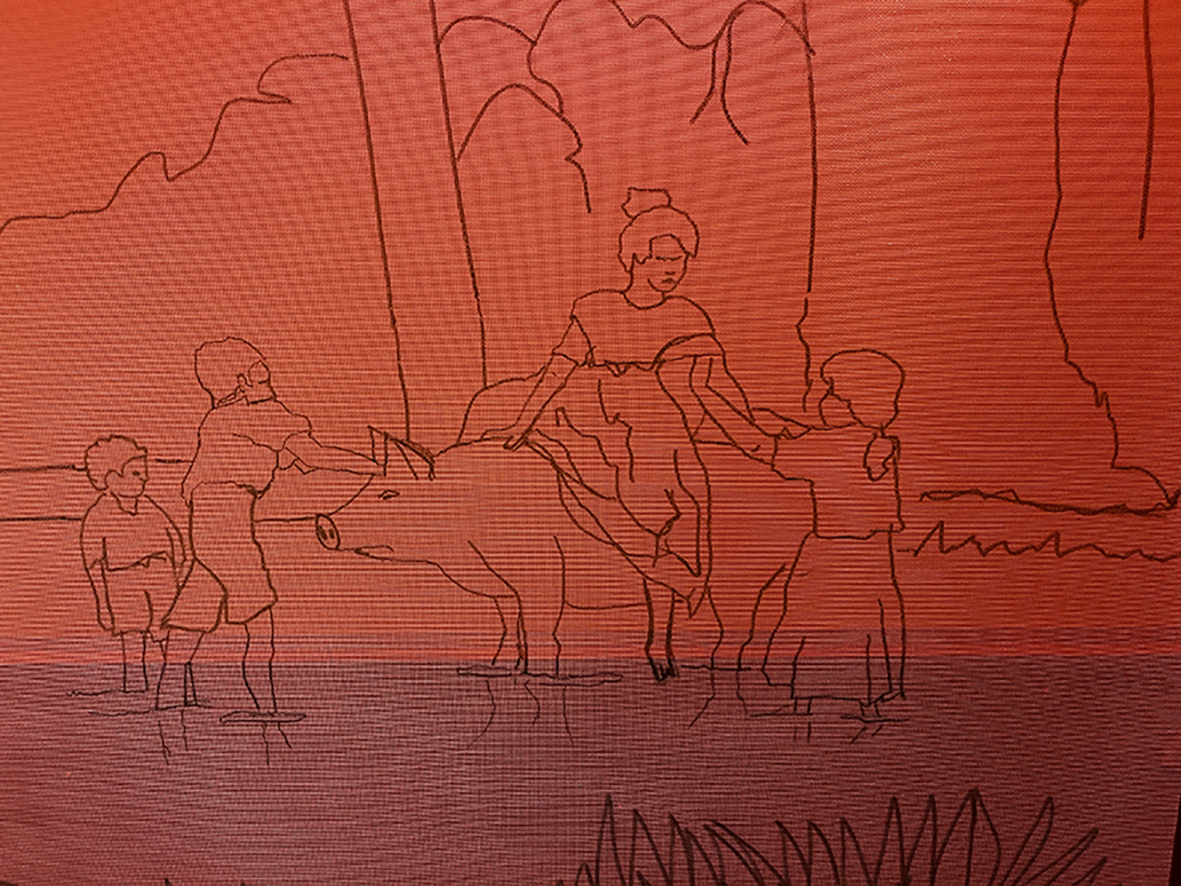Adrinópoli
Andrinòpoli és una instal·lació que planteja un espai transicional entre exhibició i construcció: un lloc on l’espectador ha de treballar perquè l’obra existeixi, explorant conceptes de resistència, negociació, narrativa i diàleg.
En el seu llibre de 1860, Olot. Su comarca, sus extinguidos volcanes, l’historiador Esteve Paluzie i Cantalozella destaca la fama que el tint vermell d’Andrinòpoli va atorgar a Olot, gràcies a la puresa de les seves aigües, que atrèien fabricants de tota Catalunya. Aquest pigment s’obtenia mitjançant un procés complex que incloïa ingredients com greixos, orina i sang animal.
La instal·lació plasma el paisatge bucòlic olotí del quadre L’Estiu del paisatgista Joaquim Vayreda, i explora el significat del vermell en els teixits i el seu rol històric en les estructures de poder. El color s’utilitzava per marcar jerarquies econòmiques i polítiques que, igual que en l’actualitat, es perceben com inamovibles.
…
Andrinòpoli is an installation that proposes a transitional space between exhibition and construction: a place where the viewer must work for the artwork to exist, exploring concepts of resistance, negotiation, narrative and dialogue.
In his 1860 book, Olot. Su comarca, sus extinguidos volcanes, historian Esteve Paluzie i Cantalozella highlights the fame that the red dye of Andrinòpoli brought to Olot, thanks to the purity of its waters, which attracted manufacturers from all over Catalonia. This pigment was obtained through a complex process that included ingredients such as fats, urine and animal blood.
The installation embodies the bucolic landscape of Olot from the painting L’Estiu by landscape artist Joaquim Vayreda, and explores the meaning of vermell in textiles and its historical role in power structures. The color was used to mark economic and political hierarchies that, as today, are perceived as immovable.

